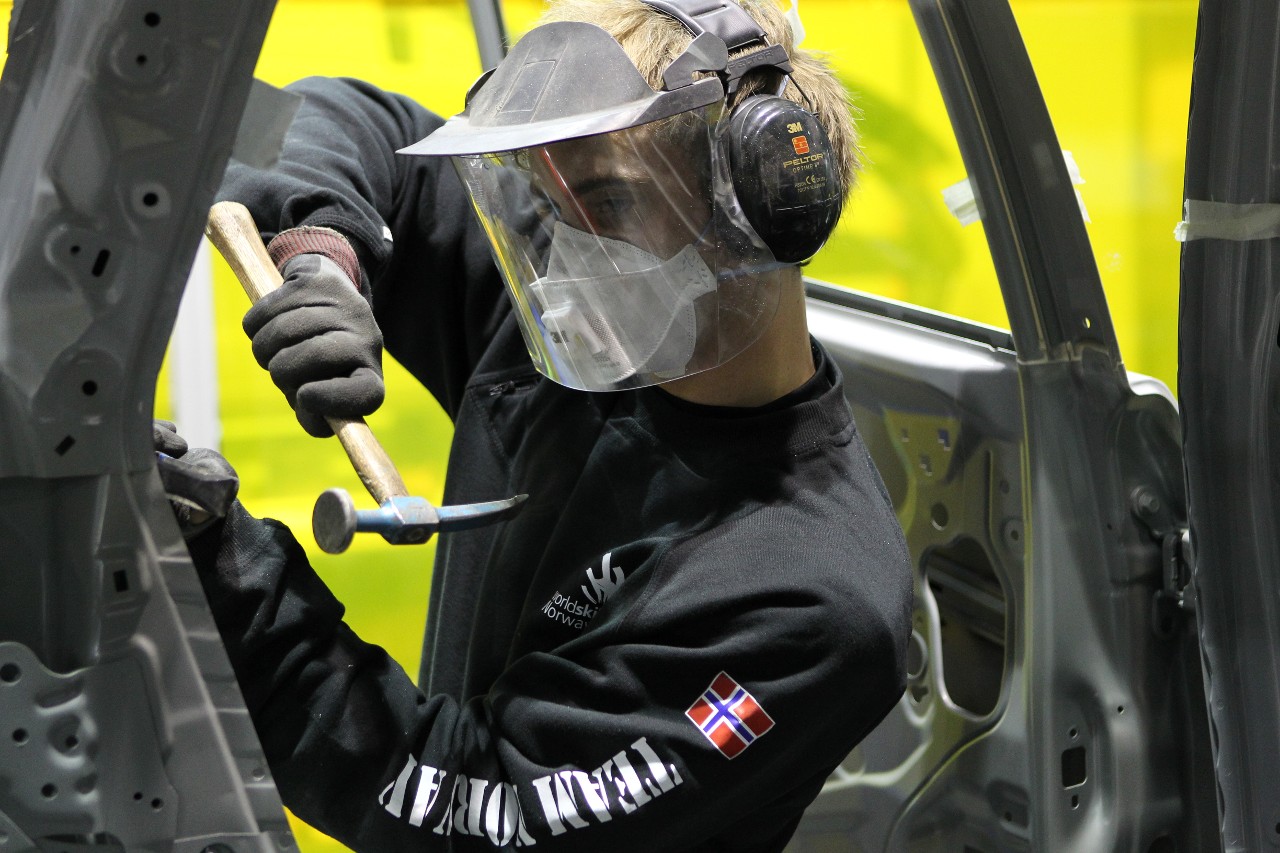Autobody Repair 13
Autobody repairers realign both the structure and the panelling of both light and heavy good vehicles after they have been involved in collisions. This can often be a complex process as each collision will present different degrees and directions of damage. The repaired vehicle must conform to the stringent specifications laid down by the vehicle manufacturer and meet both their tolerances and their safety specifications. An autobody repairer needs to be familiar with mechanical components and their function as well as the specific and often complex safety restraint systems (SRS) fitted to modern vehicles. The autobody repairer returns the vehicle to a condition where it ready for refinishing by a car painter.
An autobody repairer works in a specialist garage dedicated to repair and equipped with the machinery and equipment suitable to repair a wide variety of modern passenger cars.
An autobody repairer’s work is often divided between major and minor collision damage; however, skills in both areas may often be used on the same vehicle. In a major collision repair the autobody repairer will mount the vehicle onto a specialized body jig with which he or she can diagnose the direction and extent of the misalignment to the car body structure. He or she then attaches heavy hydraulic pulling equipment to the body and uses this pulling force to reverse the damaging force.
After the misalignment has been rectified to the structure the repairer will normally have to remove damaged structural and non-structural members which are replaced with new sections or part sections using various welding processes and/or riveting and bonding. For a minor collision an autobody repairer may replace or repair non-structural panels to a condition suitable for refinishing with paint.
Repairers must be able to use vehicle body alignment benches and associated measuring equipment (universal and fixed bracket) as a means of assessing the extent of damage and reinstating the structure to its original specifications. An autobody repairer must be a skilled welder who is capable of joining a variety of metals such as low carbon steel, high strength steels or aluminium alloys using metal active gas welding (MAG), tungsten inert gas welding (TIG), and resistance spot welding.
He or she must be able to select the correct consumables for the metal being welded and adjust the machine to provide an efficient high quality weld. In some circumstances body panels may be replaced using bonding and riveting equipment. The repairer must be able to prepare, adjust and use this equipment effectively following manufacturers specifications to reinstate damage panels.
Autobody repairers must be able to remove damaged sections with minimum disruption to surrounding body work and re-attach/re-align the parts to reinstate the integrity of the body shell. These parts or panels may be welded, bolted or riveted.
For minor damage that does not require the replacement of a part or panel an autobody repairer will use a variety of repair tools to remove the damage and reinstate the panel’s original contours. These may involve a range of shaped hammers and ‘dollies’, bumping files, body files, pry bars and oil stones.
Required skills
Communications, customer relation skills, reading, mathematics, critical thinking, good eyesight, attention to detail, problem-solving skills, work under supervision and training.
Career info
Autobody repairers have a challenge familiar to many of us: to return a vehicle damaged by collision to a condition of operation, safety and appearance as close as possible to its pre-collision state. At the same time, the repaired vehicle must conform to stringent set of specifications laid down by the vehicle manufacturer.
An autobody repairer needs to be familiar with mechanical components and their function as well as with the specific and often complex safety restraint systems fitted to modern vehicles. They will diagnose the direction and extent of misalignment and damage to the car body, parts, and systems. Then, working with a variety of specialized tools and minimum disruption to the vehicle, the repairer removes damaged elements, and then will re-attach/re-align panels to reinstate the integrity of the body shell. These panels may be welded, bolted, or riveted. Work is complete when the vehicle is in a condition ready for refinishing by a car painter.
At the Competition
Competitors will be judged on the following activities:
- Follow safety procedures during vehicle repair operations
- Remove, re-install (or replace with new), and align bolted, screwed, riveted, clip or adhesively attached exterior and/or interior panels/parts
- Operate and/or manipulate necessary equipment and tools used to perform Autobody repairs
- Perform diagnosis and corrections of vehicle damage
- Replace necessary welded-on panels/parts
- Repair damaged panels (steel, aluminum, plastic)
- Prepare vehicle for the refinishing operation
- Perform autobody related repairs such as (but not limited to) electrical diagnosis

